Synthesis of Modified Nano-Hydrotalcite Clay by Micellar Method and Its Application as Gel-like Crude Oil Flow Improver
Abstract
:1. Introduction
2. Results and Discussion
2.1. Material Screening and Condition Optimization
2.2. Universal Applicability Evaluation
2.3. Differential Scanning Calorimetry Analysis
2.4. Micro Wax Crystal Morphology Analysis
2.5. FTIR Analysis
2.6. Thermogravimetric Analysis
2.7. Contact Angle Evaluation
2.8. Dispersivity in Liquid Phase
2.9. X-ray Diffraction (XRD) Analysis
2.10. Scanning Electron Microscope Analysis (SEM) Analysis
2.11. Zeta-Potential Particle Size Analysis
2.12. Mechanism for Improving Crude Oil Fluidity
2.13. Cost Accounting and Feasibility Analysis
3. Conclusions
4. Materials and Methods
4.1. Materials
4.2. Preparation of Modified Nano Hydrotalcite
4.3. Evaluation of Modified Nano Hydrotalcite in Crude Oil
4.4. FTIR Analysis
4.5. Contact Angle Determination
4.6. Dispersivity Experiment
4.7. X-ray Diffraction (XRD) Analysis
4.8. Scanning Electron Microscope (SEM) Analysis
4.9. Zeta-Potential Particle Size Analysis
4.10. Thermogravimetric Analysis (TGA)
4.11. Differential Scanning Calorimetry (DSC) Analysis
4.12. Optical Microscope Analysis
Author Contributions
Funding
Institutional Review Board Statement
Informed Consent Statement
Data Availability Statement
Acknowledgments
Conflicts of Interest
References
- Alhumaidan, F.; Hauser, A.; Rana, M. Changes in asphaltene structure during thermal cracking of residual oils: XRD study. Fuel 2015, 150, 558–564. [Google Scholar] [CrossRef]
- Schacht-Hernández, P.; Romo, P.; Laredo, G. Comparative catalytic study for upgrading Mexican heavy crude oil. Pet. Chem. 2023, 63, 510–517. [Google Scholar] [CrossRef]
- Zhong, Y.; Tang, X.; Li, J. Catalytic Effects of Fe3O4/GLC nanocomposites for pyrolysis of heavy oil. Pet. Chem. 2022, 62, 610–620. [Google Scholar] [CrossRef]
- Wang, P.; Gu, X.; Ming, X. Resource utilization of medical waste under COVID-19: Waste mask used as crude oil fluidity improver. J. Clean. Prod. 2022, 358, 131903. [Google Scholar] [CrossRef] [PubMed]
- Zang, Y.; Liu, G.; Ji, W. Resource utilization of waste progesterone medicines as flow improver for crude oil. J. Environ. Manag. 2024, 349, 119524. [Google Scholar] [CrossRef] [PubMed]
- Chutcheva, Y.; Kuprianova, L.; Seregina, A. Environmental management of companies in the oil and gas markets based on AI for sustainable development: An international review. Front. Environ. Sci. 2022, 10, 952102. [Google Scholar] [CrossRef]
- Cui, G.; Liu, T.; Xie, J. A review of SAGD technology development and its possible application potential on thin-layer super-heavy oil reservoirs. Geosci. Front. 2022, 13, 101382. [Google Scholar] [CrossRef]
- Dalla Luiz, F.; Soares, E.J.; Renato, N. Start-up of waxy crude oils in pipelines. J. Non-Newton. Fluid Mech. 2019, 263, 61–68. [Google Scholar] [CrossRef]
- Ventura, V.; Mitre, J.; Thompson, R. A non-isothermal approach to evaluate the impact of the cooling stage on the startup flow of waxy crude oils. J. Non-Newton. Fluid Mech. 2022, 304, 104793. [Google Scholar] [CrossRef]
- Sun, H.; Lei, X.; Shen, B. Rheological properties and viscosity reduction of South China Sea crude oil. J. Energy Chem. 2017, 27, 1198–1207. [Google Scholar] [CrossRef]
- Li, C.; Huang, W.; Zhou, C. Advances on the transition-metal based catalysts for aquathermolysis upgrading of heavy crude oil. Fuel 2019, 257, 115779. [Google Scholar] [CrossRef]
- Zhang, Z.; Dong, S.; Zhang, X. Synthesis of multi-alkylpolyamines and their performance as flow improver in crude oil. Tenside Surfactants Deterg. 2022, 59, 104–110. [Google Scholar] [CrossRef]
- Zhang, Z.; Zhang, W.; Dong, S. Synthesis of aluminium alkylbenzene sulfonate and its behavior as a flow improver for crude oil. Tenside Surfactants Deterg. 2022, 59, 353–361. [Google Scholar] [CrossRef]
- Tan, J.; Wang, Z.; Chen, S. Progress and outlook of supercritical CO2-heavy oil viscosity reduction technology: A minireview. Energy Fuels 2023, 37, 11567–11583. [Google Scholar] [CrossRef]
- Li, N.; Mao, G.; Liu, Y. Effect of the evaluation and mechanism analysis of a novel nanohybrid pour point depressant on facilitating flow properties of crude oil. Energy Fuels 2018, 32, 10563–10570. [Google Scholar] [CrossRef]
- Shu, Z.; Longyu, W.; Pengzhang, C. Synthesis of new hydrazone compounds from natural grease and investigation as flow improver for crude oil. Pet. Chem. 2023, 63, 553–560. [Google Scholar] [CrossRef]
- Pan, Y.; Lou, X.; Yang, S. Ultrasonic viscosity-reduction vacuum residue oil. Rev. Chem. Eng. 2023, 39, 1085–1121. [Google Scholar] [CrossRef]
- Pu, W.; Shen, C.; Tang, X. Emulsification of acidic heavy oil for viscosity reduction and enhanced oil recovery. J. Dispers. Sci. Technol. 2019, 41, 54–61. [Google Scholar] [CrossRef]
- Gang, C.; Zhichao, Z.; Xiaodan, S. Synthesis of alkylbenzenesulfonate and its behavior as flow improver in crude oil. Fuel 2021, 288, 119644. [Google Scholar] [CrossRef]
- Wang, W.; He, Y.; Wang, B. Experimental study on wax removal and viscosity reduction of waxy crude oil by Ochrobactrum intermedium. J. Pet. Sci. Eng. 2022, 213, 110445. [Google Scholar] [CrossRef]
- Zhang, F.; Zhang, Q.; Zhou, Z. Study on the effect of different viscosity reducers on viscosity reduction and emulsification with Daqing crude oil. Molecules 2023, 28, 1399. [Google Scholar] [CrossRef] [PubMed]
- Liwa, M.; Shu, Z.; Xiaolong, Z. Enhanced aquathermolysis of heavy oil catalyzed by bentonite supported Fe(III) complex in the present of ethanol. J. Chem. Technol. Biotechnol. 2022, 97, 1128–1137. [Google Scholar] [CrossRef]
- Xu, Z.; Li, M.; Kong, Y. Synthesis and performance evaluation of graphene-based comb polymer viscosity reducer. Energies 2023, 16, 5779. [Google Scholar] [CrossRef]
- Mao, J.; Kang, Z.; Yang, X. Synthesis and performance evaluation of a nanocomposite pour-point depressant and viscosity reducer for high-pour-point heavy oil. Energy Fuels 2020, 34, 7965–7973. [Google Scholar] [CrossRef]
- Al-Mishaal, O.; Suwaid, M.; Al-Muntaser, A. Octahedral cluster complex of molybdenum as oil-soluble catalyst for improving in situ upgrading of heavy crude oil: Synthesis and application. Catalysts 2022, 12, 1125. [Google Scholar] [CrossRef]
- Tajik, A.; Farhadian, A.; Khelkhal, M. Sunflower oil as renewable biomass source to develop highly effective oil-soluble catalysts for in-situ combustion of heavy oil. Chem. Eng. J. 2023, 453, 139813. [Google Scholar] [CrossRef]
- Khormali, A.; Ahmadi, S. Experimental and modeling analysis on the performance of 2-mercaptobenzimidazole corrosion inhibitor in hydrochloric acid solution during acidizing in the petroleum industry. J. Pet. Explor. Prod. Technol. 2023, 13, 2217–2235. [Google Scholar] [CrossRef]
- Zhou, L.; Slaný, M.; Bai, B. Enhanced removal of sulfonated lignite from oil wastewater with multidimensional MgAl-NH nanoparticles. Nanomaterials 2021, 11, 861. [Google Scholar] [CrossRef] [PubMed]
- Bowen, Z.; Qingchen, W.; Weichao, D. Multi-mixed metal hydroxide as a strong stratigraphic nanoclay inhibitor in solid-free drilling fluid. Nanomaterials 2022, 12, 3863. [Google Scholar] [CrossRef] [PubMed]
- Yang, F.; Paso, K.; Norrman, J. Hydrophilic nanoparticles facilitate wax inhibition. Energy Fuels 2015, 29, 1368–1374. [Google Scholar] [CrossRef]
- Ying, T.; Michal, S.; Ying, Y. Highly active Mg-Al hydrotalcite for efficient O-methylation of phenol with DMC based on soft colloidal templates. J. Chem. Technol. Biotechnol. 2022, 97, 79–86. [Google Scholar] [CrossRef]
- Du, Y.; Huang, C.; Jiang, W. Preparation of surface modified nano-hydrotalcite and its application as a flow improver for crude oil. Fuel 2024, 357, 130005. [Google Scholar] [CrossRef]
- Zhao, H.; Xu, J.; Li, T. Effect of heteroaromatic pendants in comb copolymers on paraffin crystallization and cold flow ability of crude oil. Energy Fuels 2016, 30, 5398–5403. [Google Scholar] [CrossRef]
- Shuang, T.; Zhang, L.; Fangling, Q. Enhanced transesterification of rapeseed oil to biodiesel catalyzed by KCl/CaO. C. R. Chim. 2022, 25, 145–153. [Google Scholar] [CrossRef]
- Zhaoyi, L.; Jie, Z.; Chengtun, Q. Synthesis of Mg-Al hydrotalcite clay with high adsorption capacity. Materials 2021, 14, 7231. [Google Scholar] [CrossRef] [PubMed]
- Navajas, A.; Campo, I.; Moral, A. Outstanding performance of rehydrated Mg-Al hydrotalcites as heterogeneous metanalysis catalysts for the synthesis of biodiesel. Fuel 2018, 211, 173–181. [Google Scholar] [CrossRef]
- Zhichao, Z.; Michal, S.; Wangyuan, Z. Influence of reservoir minerals and ethanol on catalytic aquathermolysis of heavy oil. Fuel 2022, 307, 124871. [Google Scholar] [CrossRef]
- Saulick, Y.; Lourenço, S.; Baudet, B. A semi-automated technique for repeatable and reproducible contact angle measurements in granular materials using the sessile drop method. Soil Sci. Soc. Am. J. 2017, 81, 241–249. [Google Scholar] [CrossRef]
- Marmur, A. Soft contact: Measurement and interpretation of contact angles. Soft Matter 2006, 2, 12–17. [Google Scholar] [CrossRef] [PubMed]
- Reyna-Villanueva, L.; Dias, J.; Medellin, C. Biodiesel production using layered double hydroxides and derived mixed oxides: The role of the synthesis conditions and the catalysts properties on biodiesel conversion. Fuel 2019, 251, 285–292. [Google Scholar] [CrossRef]
- Yu, H.; Sun, Z.; Jing, G. Effect of a magnetic nanocomposite pour point depressant on the structural properties of Daqing waxy crude oil. Energy Fuels 2019, 33, 6069–6075. [Google Scholar] [CrossRef]
- Wangyuan, Z.; Michal, S.; Jie, Z. Acetylation modification of waste polystyrene and evaluation of its use as a crude oil flow improver. Polymers 2021, 13, 2505. [Google Scholar] [CrossRef]
- Tu, Z.; Jing, G.; Sun, Z. Effect of nanocomposite of attapulgite/EVA on flow behavior and wax crystallization of model oil. J. Dispers. Sci. Technol. 2018, 39, 1280–1284. [Google Scholar] [CrossRef]
- Quan, H.; Xing, L. The effect of hydrogen bonds between flow improvers with asphaltene for heavy crude oil. Fuel 2019, 237, 276–282. [Google Scholar] [CrossRef]
- Xuefan, G.; Long, G.; Yongfei, L. Performance and mechanism of span surfactants as clean flow improvers for crude oil. Pet. Chem. 2020, 60, 140–145. [Google Scholar] [CrossRef]


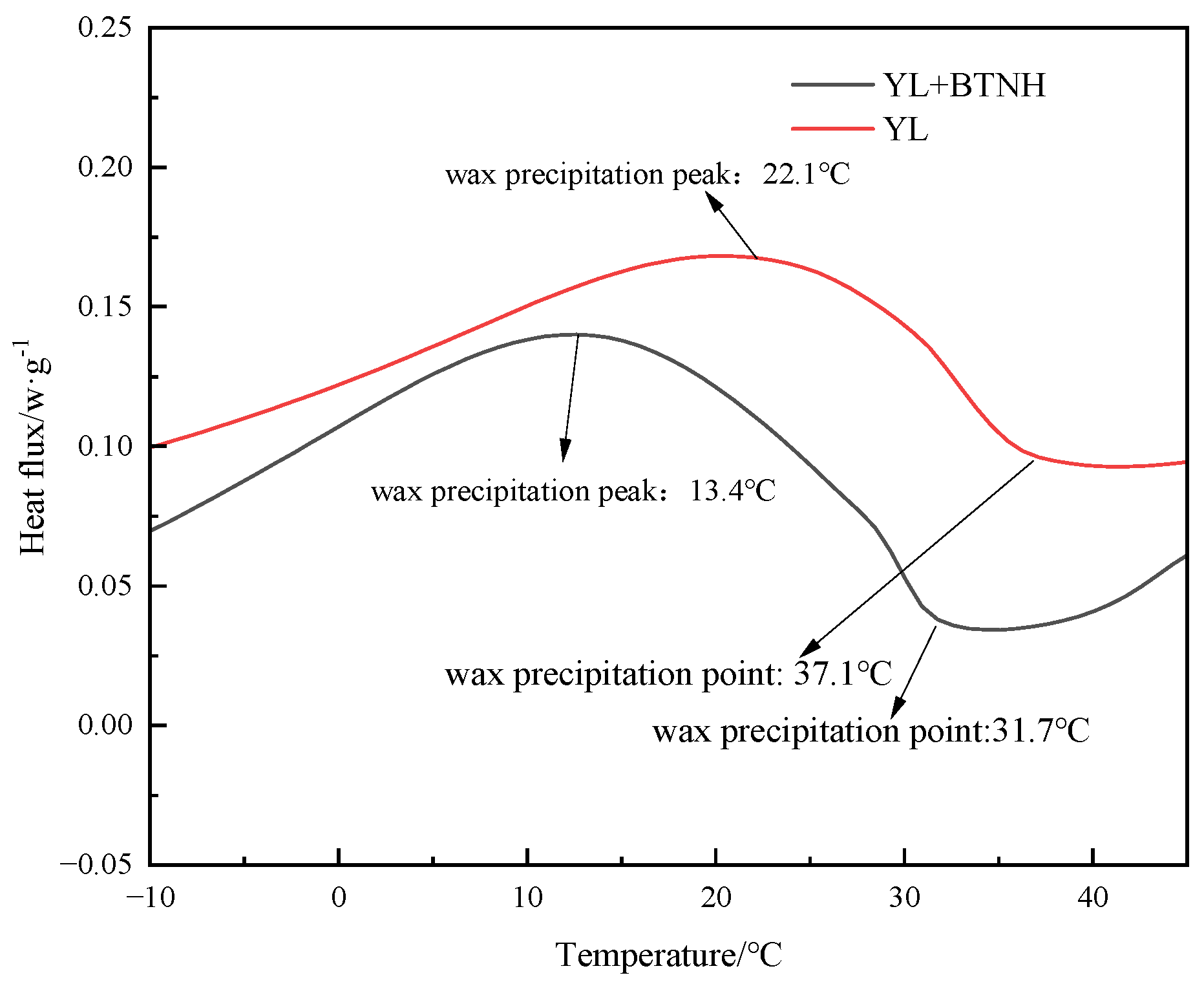


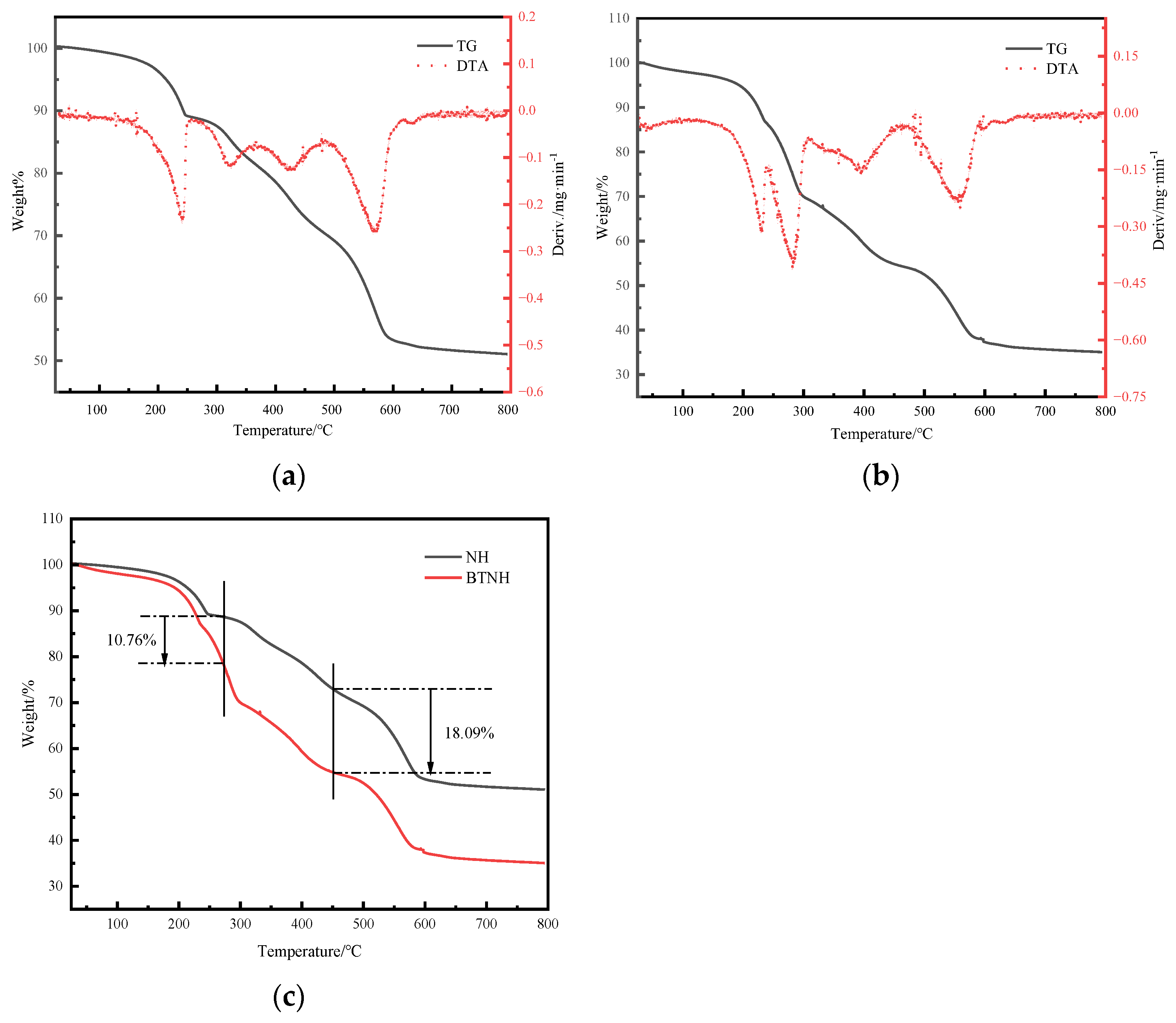


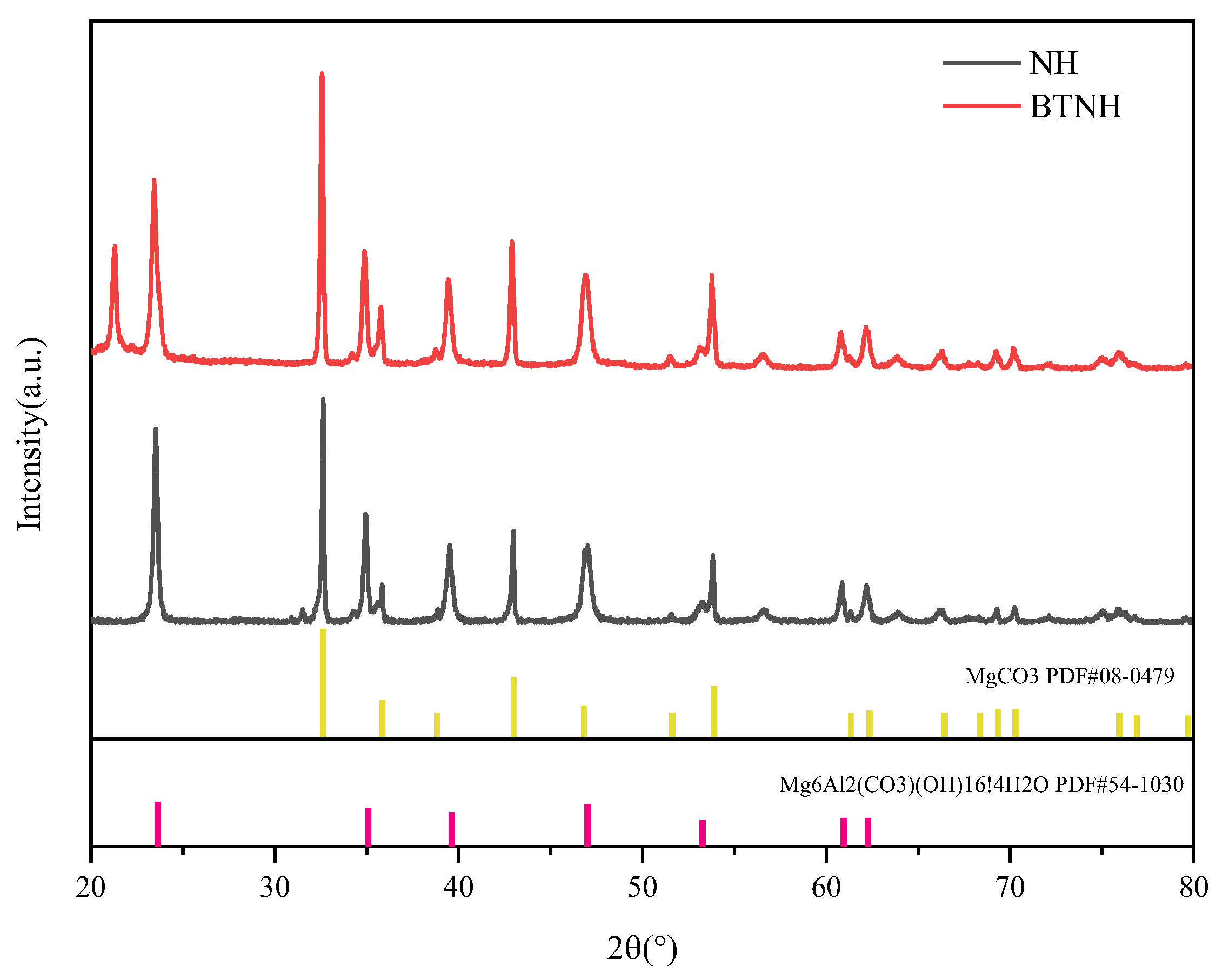


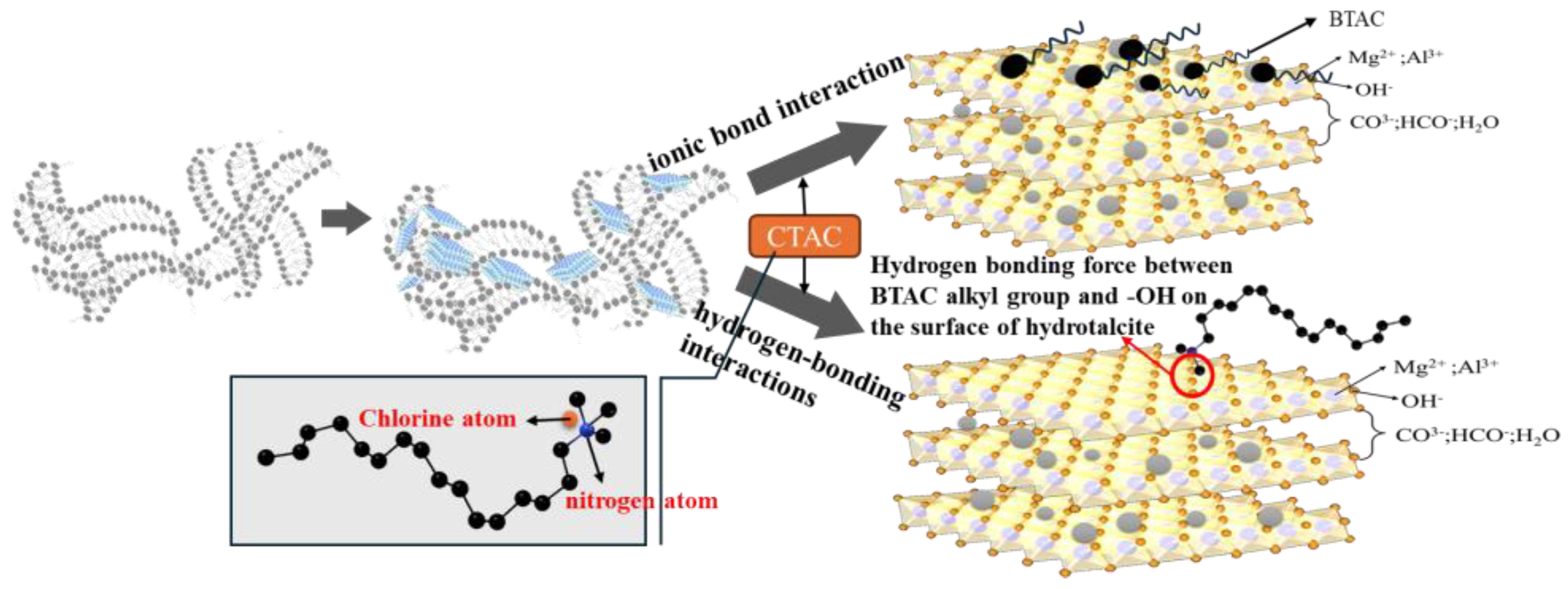
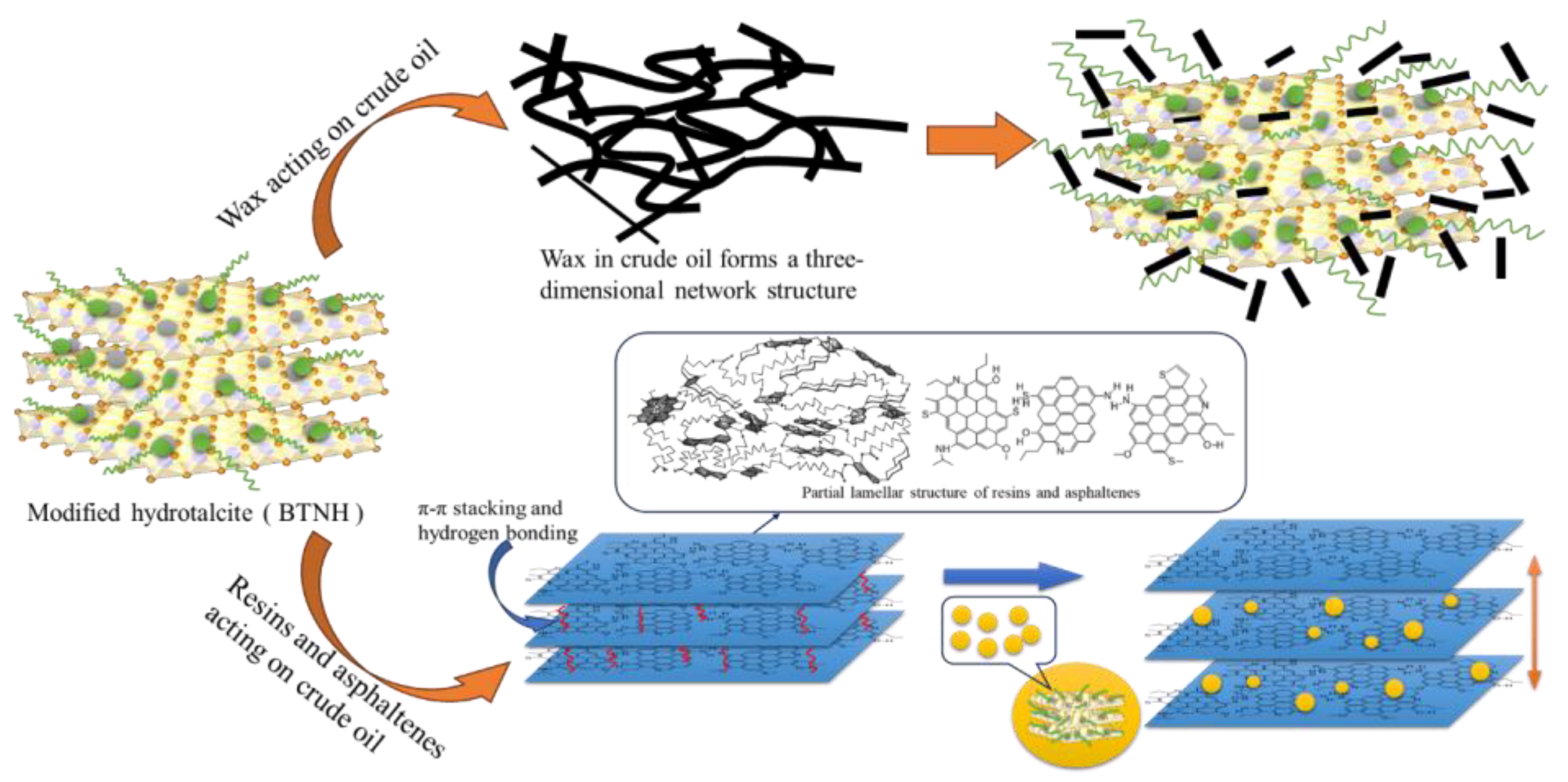
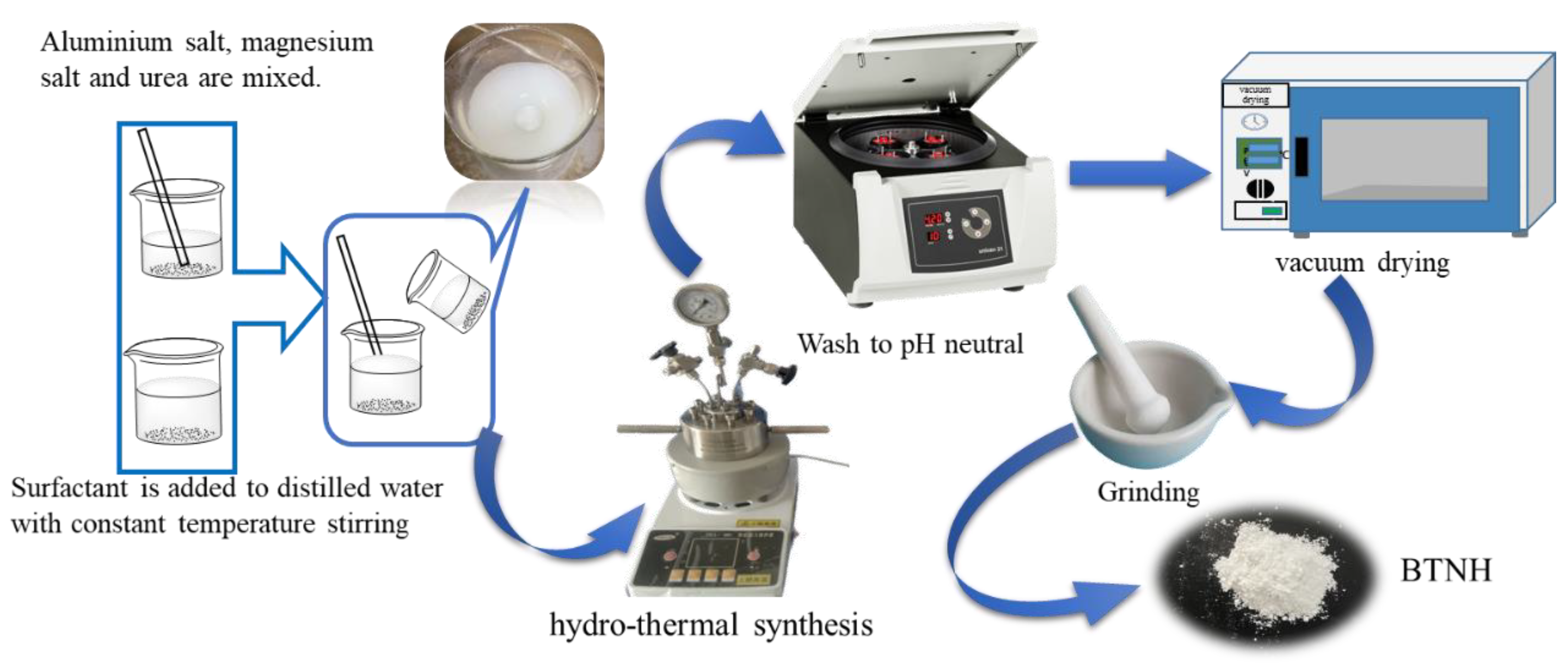
| Temperature | Recipe | AV/ mPa·s | PV/ mPa·s | YP/ Pa | FL/ mL | Lubricity Factor | YP/PV |
|---|---|---|---|---|---|---|---|
| 25 °C | 4% base mud | 5.05 | 4.80 | 0.25 | 48.5 | 0.23 | 0.05 |
| 4% S1 | 6.05 | 2.00 | 4.05 | 13.5 | 0.25 | 2.03 | |
| 4% S2 | 6.60 | 2.10 | 4.50 | 16.7 | 0.27 | 2.14 | |
| 4% S3 | 7.75 | 3.00 | 4.75 | 22.1 | 0.22 | 1.58 | |
| 250 °C | 4% base mud | 2.75 | 2.70 | 0.05 | 150.0 | / | 0.02 |
| 4% S1 | 5.70 | 2.00 | 3.70 | 67.5 | 0.14 | 1.85 | |
| 4% S2 | 5.25 | 1.90 | 3.35 | 45.6 | 0.15 | 1.76 | |
| 4% S3 | 3.00 | 1.50 | 1.50 | 62.1 | 0.11 | 1.00 |
| Crude Oil | YL | CQH | J76 | GN | HQ |
|---|---|---|---|---|---|
| Pour point/°C | 30.0 | 24.0 | 21.0 | 49.0 | 15.5 |
| Pour point with | 22.0 | 10.5 | 5.0 | 41.0 | 6.0 |
| Crude Oil | Pour Point/°C | Saturated HC/% | Aromatic HC/% | Asphaltene/% | Resin/% |
|---|---|---|---|---|---|
| YL | 31.0 | 45.63 | 33.24 | 8.31 | 12.82 |
| CQH | 24.0 | 52.70 | 24.60 | 10.02 | 9.26 |
| J76 | 20.5 | 49.52 | 31.43 | 7.23 | 11.82 |
| GN | 49.0 | 62.45 | 20.12 | 10.41 | 7.02 |
| HQ | 15.5 | 30.05 | 21.15 | 30.17 | 18.63 |
Disclaimer/Publisher’s Note: The statements, opinions and data contained in all publications are solely those of the individual author(s) and contributor(s) and not of MDPI and/or the editor(s). MDPI and/or the editor(s) disclaim responsibility for any injury to people or property resulting from any ideas, methods, instructions or products referred to in the content. |
© 2024 by the authors. Licensee MDPI, Basel, Switzerland. This article is an open access article distributed under the terms and conditions of the Creative Commons Attribution (CC BY) license (https://creativecommons.org/licenses/by/4.0/).
Share and Cite
Du, Y.; Slaný, M.; Hu, T.; Lian, Y.; Bai, Y.; Ke, C.; Chen, G. Synthesis of Modified Nano-Hydrotalcite Clay by Micellar Method and Its Application as Gel-like Crude Oil Flow Improver. Gels 2024, 10, 443. https://doi.org/10.3390/gels10070443
Du Y, Slaný M, Hu T, Lian Y, Bai Y, Ke C, Chen G. Synthesis of Modified Nano-Hydrotalcite Clay by Micellar Method and Its Application as Gel-like Crude Oil Flow Improver. Gels. 2024; 10(7):443. https://doi.org/10.3390/gels10070443
Chicago/Turabian StyleDu, Yingna, Michal Slaný, Tianbao Hu, Yubo Lian, Yingxue Bai, Congyu Ke, and Gang Chen. 2024. "Synthesis of Modified Nano-Hydrotalcite Clay by Micellar Method and Its Application as Gel-like Crude Oil Flow Improver" Gels 10, no. 7: 443. https://doi.org/10.3390/gels10070443







